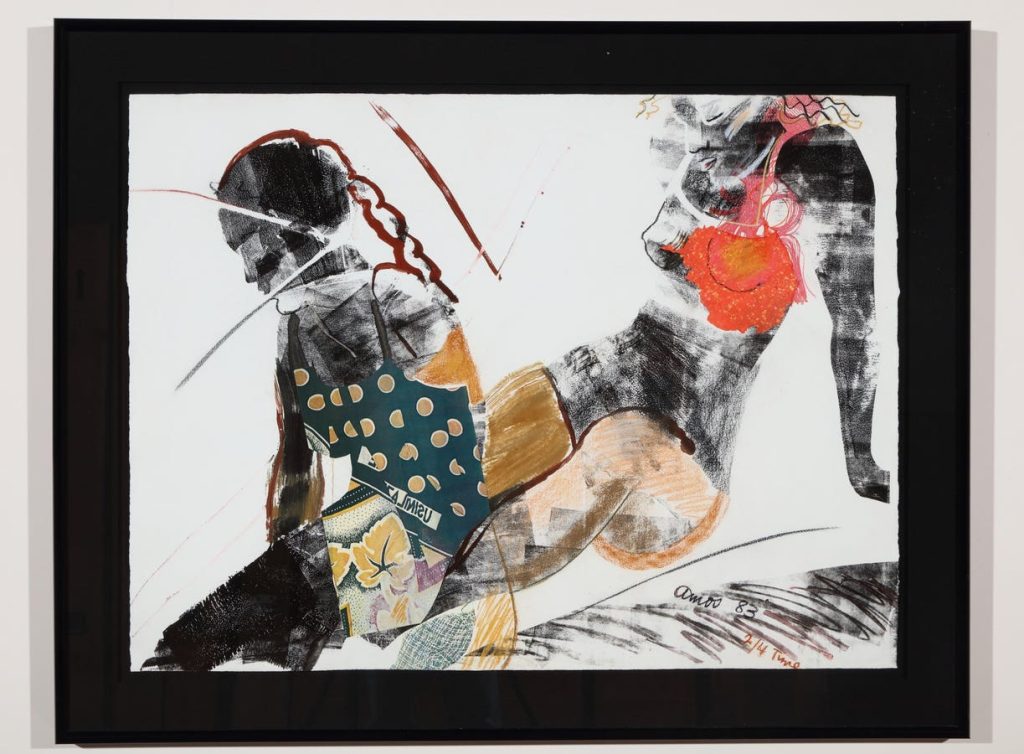Which American university has the best art collection?
Harvard? Yale? UCLA?
Not when it comes to artists of African descent they don’t. Particularly women. That distinction goes to Spelman College, a historically black liberal arts college for women in Atlanta. The Spelman College Museum of Fine Art was founded in 1996 with a mission to uplift art by and about women of the African diaspora. It’s the only museum in the nation dedicated to the niche.
For the first time ever, Spelman is touring a portion of its permanent collection nationwide beginning at Vassar College in Poughkeepsie, NY. “Silver Linings: Celebrating the Spelman Art Collection” shows off Spelman College’s collection while examining the important role Historically Black Colleges and Universities (HBCUs) have had in providing exhibition opportunities and establishing provenance for Black artists.
“Spelman’s art collection has long been regarded as a hidden gem and we have lent individual works of art for many years. Now, we are excited to share a selection of works by artists who shape our collection with audiences around the United States,” Liz Andrews, Executive Director, Spelman College Museum of Fine Art, said. “Our hope is that this tour will raise awareness of the work we are doing in Atlanta to uplift Black women artists.”
Spelman’s art museum may have only opened in 1996, but the college’s art collecting dates back to 1899. “Silver Linings” spans the entirety of the 20th century through today featuring nearly 40 artists, not just women. Included are figures largely overlooked by museums, as well as icons: Henry Ossawa Tanner, Hale Woodruff, Elizabeth Catlett, Romare Bearden, Benny Andrews, Nellie Mae Rowe, Emma Amos, Sam Gilliam. Many of contemporary art’s most celebrated living artists also have work on view: Firelei Báez, Glenn Ligon, Howardena Pindell, Deborah Roberts, Faith Ringgold, Lorna Simpson, and Carrie Mae Weems.
“The Spelman College Museum of Fine Art collection represents a long-time commitment to collecting and exhibiting works of art by Black artists,” Andrews told Forbes.com. “This is especially important since Spelman College and other HBCUs have made it possible for artists to have their works in institutional (or) museum collections during many decades when Black artists were actively excluded from mainstream museums.”
Spelman and the other HBCU’s have also provided generations of Black artists critical support by way of instruction and mentorship, scholarships and financial aid, networking opportunities and opportunities to show their work, support they would not have received otherwise.
Less tangibly, but no less important, “HBCUs often prioritize creativity and self-expression, providing an environment where artists can explore and experiment with their art without fear of judgment or discrimination,” Andrews said, adding, “This creative freedom can lead to the development of innovative and groundbreaking art.”
Throughout the 20th century, when America’s top art museums, colleges and galleries were de facto “whites only,” HBCU’s offered a vibrant ecosystem for aspiring African American artists.
“HBCUs have long been centers of Black culture and identity; by embracing and celebrating Black culture and history, these institutions have helped artists develop a strong sense of their cultural heritage, which can be a powerful source of inspiration for their work,” Andrews said.
“Silver Linings” can be seen at Vassar College’s Frances Lehman Loeb Art Center through January 28, 2024. The exhibition then travels to the Boise (ID) Art Museum from February 24, 2024, through July 21, 2024, the University of Michigan Museum of Art in Ann Arbor from August 24, 2024, through January 5, 2025, the Harn Museum of Art at the University of Florida in Gainesville from February 4, 2025, through July 6, 2025, and finally the Hunter Museum of American Art in Chattanooga, TN from September 26, 2025, through January 12, 2026.
Read the full article here










